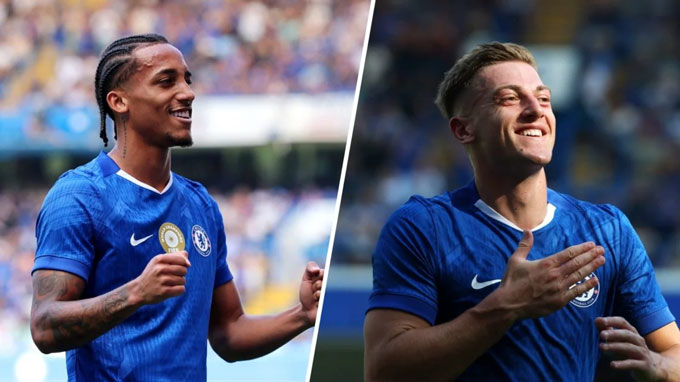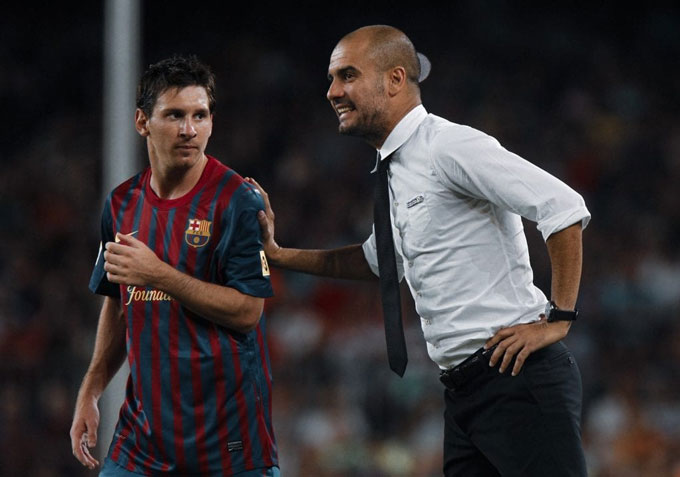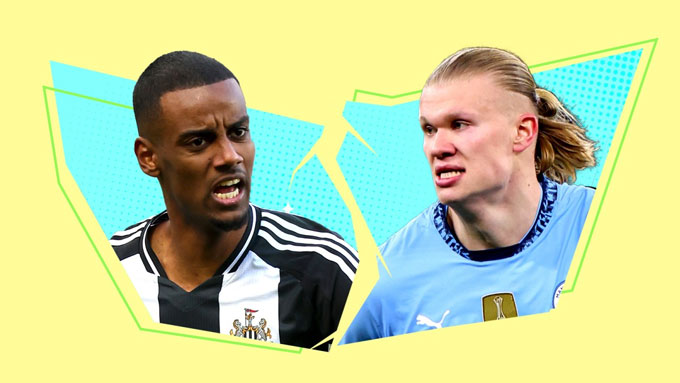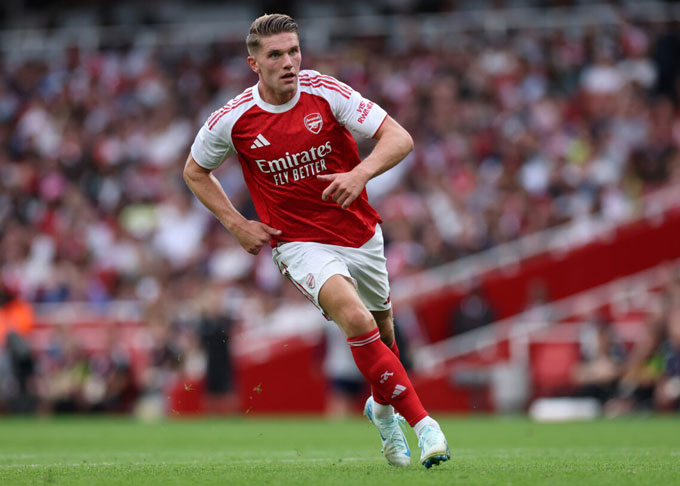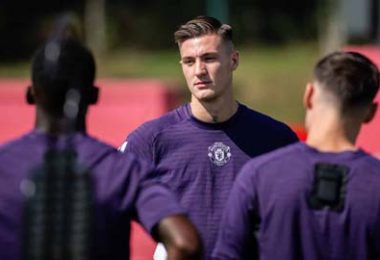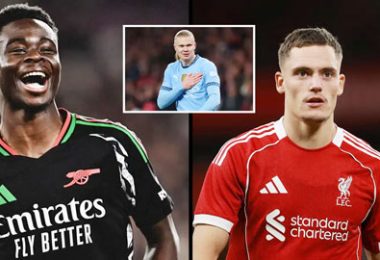This summer, the Premier League witnessed the wave of recruiting strong traditional strikers, when almost every team tried to bring back a team of reliable goalscorer.
A silent revolution in the center of the attack at the Premier League Club. The number 9 is no longer the nostalgic image of the past, but has become a linked link in the modern tactical machine.
In the summer, 2025 witnessed the wave of the club investing in class strikers, possessing superior bodybuilding – many people over 1m90 tall – with unprecedented frequency. This trend shows a profound tactical movement, redefining the role and affirming that height, strength and ability to make walls – the qualities that have belongs to “old number 9”, are returning and central to today's football.
In fact, a few years ago, this also seemed outdated. In the era that “number 9 virtual”, the strikers bundle into the same attack map constantly swapping to the throne, the tall and tall striker seemed to be extinct. But now, they not only come back, but also become the main character.
From nostalgia to indispensable
Leading is Erling Haaland of Man City. 1m95 tall, the Norwegian striker is not just a “muscle machine”. He is a phenomenon with 85 goals after two seasons in the Premier League, but more than the figure, it is a permanent threat that forced the defense to change the system and cut the two attached people. Haaland's profile is both a model and a catalyst for a new trend.
Throughout the tournament, the clubs are following. Arsenal recruited Viktor Gyokeres (1m93), who impressed the pre -season period with the ability to move without ball and link. MU owned Benjamin Sesko (1m93), and Liverpool added Hugo Ekitike (1m91).
Chelsea, in the stable “number 9” search journey, brought Liam Delap (1m88) and Joao Pedro (1m85), both had the power and potential. Not only the big guys that new teams such as Sunderland, Burnley and Leeds have also invested in position 9 to ensure the goal of relegation.
Sunderland signed a contract with Wilson Isidor, who scored 13 goals in the Championship, while Burnley put his faith in Zian Flemming (12 goals last season) to lead the attack. Leeds recruited Lukas Nmecha on the form of free transfer from Wolfsburg, expecting his experience to be transformed into success in the Premier League.
Emphasizing the height factor not to return to the rudimentary stone, but the answer to the complex problem: how to break the low defense block, stretch the high -rise defense, and deal with the teams that are both disciplined and physically physically.
Evolution of role number 9
In the early 2000s, the Premier League was flooded with “Kong” such as Didier Drogba or Emmanuel Adebayor – strong strikers, good walls, goals from crosses. Then came the “Spanish revolution”. Pep Guardiola's Barca, with transcendental technology and flexible movement, turns “virtual number 9” into a trend. Lionel Messi, Cesc Fabregas or Francesco Totti is used in the position where creating space and creation are placed higher than the air phase.
This trend flows into England. Roberto Firmino in Liverpool becomes a model with deep backing, smart pressing, creating conditions for Mo Salah and Sadio Mane to shine. Guardiola's Man City even played many times without a true striker.
In that context, the tall and tall striker almost disappeared.
But football always rotates. Now, the modern number 9 must be a hybrid: smart as “virtual number 9” but strong as classic striker. They both know how to go deep, press from the front line, stretching the defense with the speeding phase behind, and the right to win in the aerial disputes.
This type of “hybrid” profile – high, strong, fast, technical – very rare, and that is why clubs are willing to pay high prices.
Why does the change take place right now?
There are many interwoven elements.
- Low block defense becomes popular. The average team and the relegation group play more closely, making it difficult to create space at the end of the pitch. A superior bodybuilding center brings a direct plan: winning a dispute, keeping the ball and stretching the defense.
- The ball returns. With the bundle -backs in the middle as midfielder, the role of holding the border often belongs to the winger or the wing -back rising – those who often cross the ball early. To take advantage of, need a person with enough bodybuilding and strength to finish.
- Evolution of the pressing system. The coaches want the striker to actively close and dispute long passes if the opponent skip the middle line. Models No. 9 are tall, agile like Alexander Isak or Haaland are the ideal choice.
- Psychological factors. A tall striker is a fulcrum both in tactics and spirit, the goal for his teammates, the concern for the opponent defender, and what makes the audience excited. Haaland not only overwhelming tactics, but also creating stage effects.
This is not a silent trend. Premier League clubs spent more than £ 230 million for this player in the transfer window, the figure could reach 500 million pounds when the market was closed.
Clubs begin to understand their value not only at the goal, but also in the attack structure. For example, even without scoring 25 goals/season, Gyokeres can still change the shape of the attack: helping the midfielder to rise, the striker in the wing, and the back -back of the husband is comfortable.
It is no longer just the number of goals, but the matching and efficiency in the system.
Trends temporarily or new standards?
The small, agile striker still has acting ground. The Julian Alvarez, Gabriel Jesus or Raheem Sterling brings another type of threat: skillful, intelligent, difficult to be close. But the return of the tall striker is not a temporary trend, but a tactical reaction to the trend of modern football.
The coaches seek balance. The ideal justice consists of a runner, creator and a fulcrum. More and more teams choose the fulcrum that is a player combining bodybuilding with techniques.
The Premier League, with a high pace and collision, is always a fertile land for such a striker. The current difference is that they are used with more sophisticated tactical thinking.
Haaland may be prototype, but the thing that makes this trend is worth noting: Gyokeres is not “a rib” but a smart runner; Isak is not only good at head but also soft in the game; Sesko is both delicate and powerful.
Conclusion: The new shape of the Premier League striker
The number 9 in the Premier League is evolving, this time as a more comprehensive player, more demanding and more interesting. The height returns, but does not trade dexterity or intelligence. Large body accompanied by a large brain.
In a tournament where every small detail is determined, where pressing and location often eliminates each other, owns a person who turns a long pass into an opportunity, or half a cross into a goal, is invaluable.
Therefore, when Gyokeres headed high and hit the net or Ekitike used the power to rob the ball and created, remember: The tall striker is not a passing heritage. They are the present!



